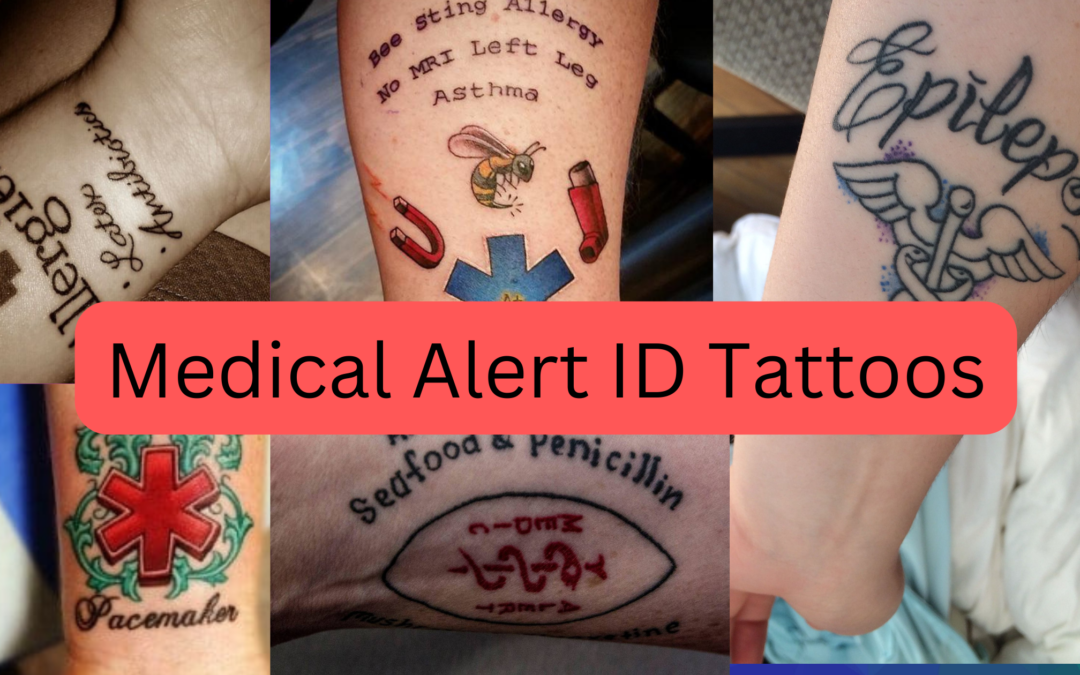We’ve all seen them before – the medical alert tattoos that people get in case of emergency. But what are they really for, and do they actually work?
In this blog post, we’ll be taking a closer look at medical alert ID tattoos. We’ll explore what they are, how they work, and whether or not they’re effective in an emergency situation. So if you’re considering getting a medical alert tattoo, read on to learn more!
What are medical alert ID tattoos?
Medical alert ID tattoos are designed to provide emergency responders with vital health information in case of an accident or injury. These tattoos are usually placed on easily-visible parts of the body, such as the wrist or arm, and feature a recognizable medical symbol along with personalized information such as allergies, medical conditions, and contact numbers. By providing this useful information at a glance, medical alert tattoos can save lives – without taking up space on your keychain! People who may benefit from medical alert tattoos the most include those with chronic illness or allergies, frequent travelers, those with disabilities, and elderly adults. While Medical Alert ID cards are also available for those that prefer not to have a permanent tattoo (and some prefer something more subtle than large tattoo designs), a well-placed tattoo is guaranteed to remain visible no matter what situation arises. Whichever one you choose, whether it’s a worded tattoo or single symbol, having an easily readable piece of vital health/contact information can go a long way for your safety and wellbeing. In short, Medical Alert ID tattoos provide peace of mind for both you and your family by ensuring that helpful personal data can be quickly accessed in order to obtain necessary aid during times of need.
How to choose the right design for your tattoo
When it comes to choosing a design for a tattoo, it’s important to take into account both the aesthetic value and the practicality. The design should be meaningful and hold personal significance for you, so try to think about symbols that might represent an aspect of your life or values. Consider size and location carefully; bigger designs may require more money and time to complete and may not work in certain parts of the body due to skin texture. Placement is also a big factor when selecting a design—for example, picking something larger will likely require the help of an experienced tattoo artist with good arm reach. Don’t forget to review the tattoo artist portfolio beforehand as well, since different artists will likely favor specific styles or methods of illustration. This way you can ensure that whoever you choose is qualified enough to make your desired design come alive. It’s also important to do thorough research before committing; look at other similar tattoos online, check out photography galleries for inspiration, and more importantly – make sure you like it enough that it’ll still feel special years down the road! Diligence makes choosing the right design much easier and ensures a beautiful end product. After all, when getting a tattoo you’re leaving a permanent reminder of yourself behind – so invest time into making sure it’s exactly what you envision!
The benefits of having a medical alert ID tattoo
Although it might seem a little extreme, having a medical alert ID tattoo can provide unique benefits in an emergency situation. In the event you are unable to speak for yourself or when vital information needs to be quickly accessed, a tattoo can make all the difference. Not only can it provide first responders with vital information like allergies, medications being taken, or pre-existing conditions, but it can also point them in the direction of your healthcare documents with contact details and/or insurance information. Depending on the nature of your medical problems, your tattoo could even contain useful tips such as how often insulin should be given or what supplements are important for your well-being. Beyond medical emergencies, having a medical alert ID tattoo could be beneficial in other life-threatening situations. It could include instructions if you have asthma and require some kind of inhaler intervention during an attack, and even indicate whether someone has Alzheimer’s disease so they don’t get lost and are found quickly. Ultimately, not everyone may want or need a medical alert ID tattoo but doing so can unlock invaluable lifesaving benefits when they’re needed most. Additionally, having one gives people extra peace of mind that their health information is always easily available regardless of where they are or what situation has arisen.
How to care for your new tattoo
Caring for a new tattoo is an important part of the tattooing process. The good news is that with a few simple steps, ensuring proper healing and aftercare can be quite straightforward. After the skin has been tattooed, it’s essential to keep the area clean and protected from infection. Initially, any scabbing or redness should be left alone while it heals and given time to heal properly, although avoiding contact with clothing is important. Once healed, it’s important to keep the area moisturized with either a specially formulated lotion or body oil so as to avoid the risk of dry patches or cracking. Sunscreen should also be applied when exposed to sunlight, as the ultraviolet rays can cause fading or discoloring of the ink. With regular cleaning and moisturizing, your new tattoo will stay colorful and vibrant for years to come!
Conclusion
Now that you know all about medical alert ID tattoos and their importance, it’s time to choose the design for your tattoo. Keep in mind the benefits of having a medical alert ID tattoo and what type of information you would like to include on your tattoo. Once you have chosen a design, take care of your new tattoo so that it can last a lifetime!

